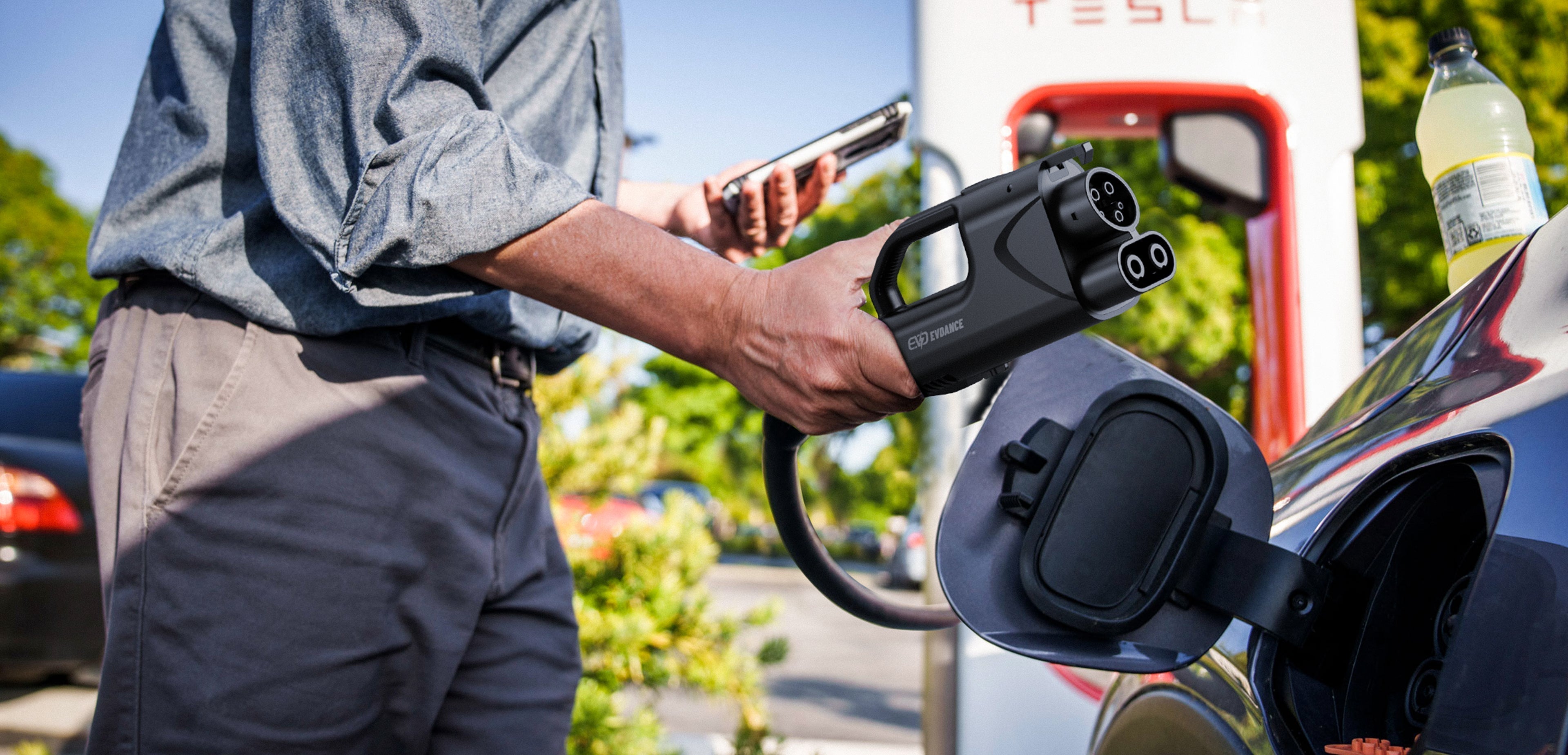As the electric vehicle (EV) landscape expands, one challenge persists: compatibility. EV adapters are critical tools that allow drivers to charge their vehicles across different charging stations and plug types. For EVDANCE users and the broader EV community, understanding the role, types, and proper usage of EV adapters can ensure safer, more efficient, and more flexible charging.
1. What is an EV Adapter?
An EV adapter is a device that connects an electric vehicle’s charging inlet to a charging station with an incompatible connector. Unlike EV chargers, which manage power flow and communication between the grid and vehicle, adapters simply enable physical and electrical compatibility between different plug types.
Common Use Cases:
-
Tesla drivers using J1772 charging stations
-
CCS vehicles charging at Tesla Superchargers (via NACS to CCS adapter)
-
Home Level 2 chargers with NEMA 14-50 plugs adapted for 6-50 outlets
2. Types of EV Adapters
EV adapters vary by plug type, current capacity, and intended usage. Below is a breakdown of common adapters in North America:
| Adapter Type | Input Plug | Output Connector | Use Case |
|---|---|---|---|
| J1772 to Tesla | J1772 | Tesla | Non-Tesla charger to Tesla EV |
| Tesla to J1772 | Tesla | J1772 | Tesla charger to non-Tesla EV |
| NACS to CCS Combo | NACS (Tesla) | CCS | Supercharger to CCS EV |
| NEMA 14-50 to 6-50 | NEMA 6-50 | NEMA 14-50 | Adapt Level 2 charger at home |
| CHAdeMO to CCS | CHAdeMO | CCS | Rare—mostly legacy support |

3. Safety Considerations When Using Adapters
Using EV adapters requires careful attention to safety and manufacturer recommendations. Improper usage may lead to overheating, communication failures, or even electrical hazards.
Tips for Safe Use:
-
Always use certified adapters (e.g., UL listed)
-
Confirm voltage and amperage compatibility
-
Avoid daisy-chaining multiple adapters
-
Store adapters in clean, dry conditions
-
Regularly inspect for wear or corrosion
4. Future of Adapters in a NACS-Dominant Market
With Tesla’s North American Charging Standard (NACS) gaining widespread adoption—now endorsed by major automakers—the market is shifting toward plug standardization. However, legacy vehicles and regional plug disparities mean EV adapters will remain essential in the coming years.
EVDANCE is actively developing a line of premium-grade EV adapters designed to bridge these gaps with maximum safety and reliability.
Conclusion
EV adapters offer a practical solution to the complex landscape of EV charging. Whether you're traveling across regions or managing multiple charging standards at home, the right adapter ensures that your charging experience remains uninterrupted and safe. As the EV infrastructure evolves, EVDANCE remains committed to delivering adapter solutions that are both forward-compatible and dependable.
Author: Lay Wen.
Recommend Reading: A Comprehensive Guide to EV Adapters: From NEMA to NACS-to-CCS1








Share:
Understanding NEMA Plug Types for EV Charging: A Complete Guide
How Far Does a Tesla Model Y Go on a Full Charge?